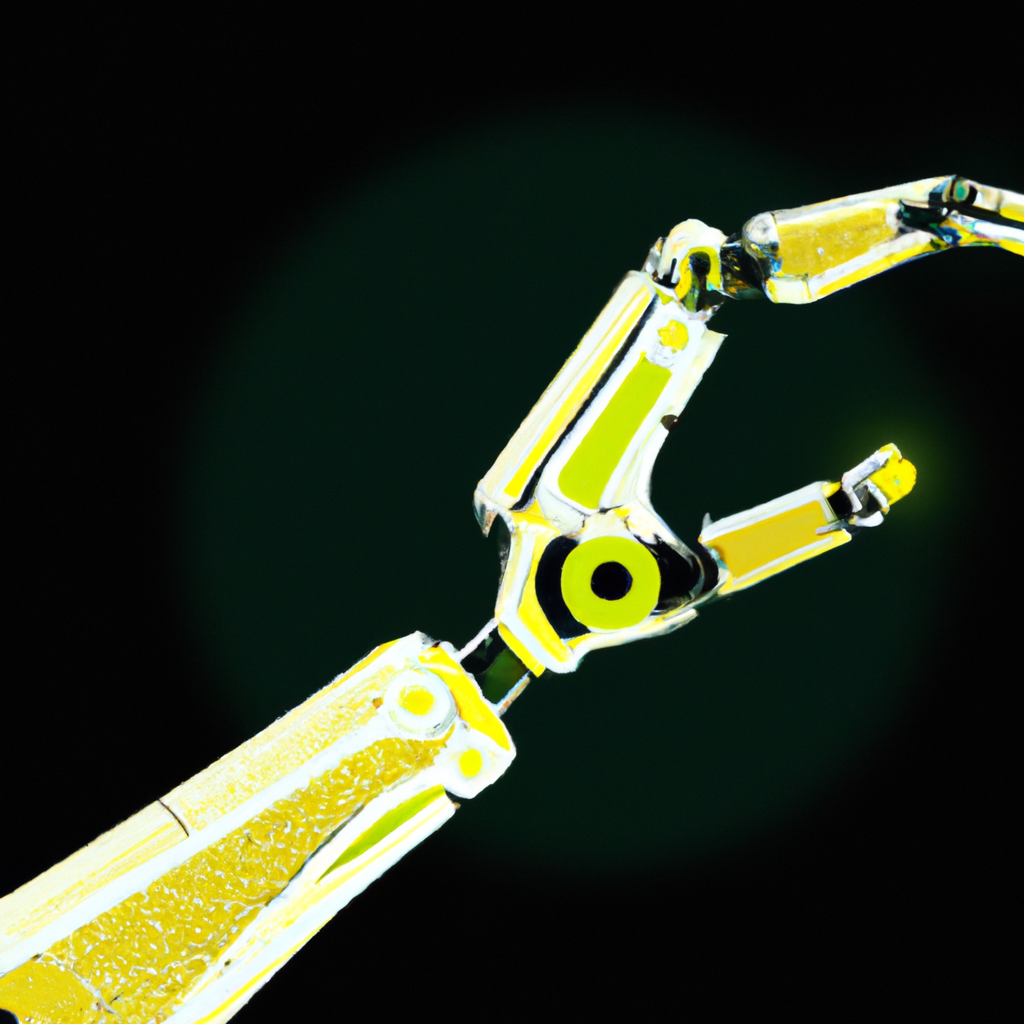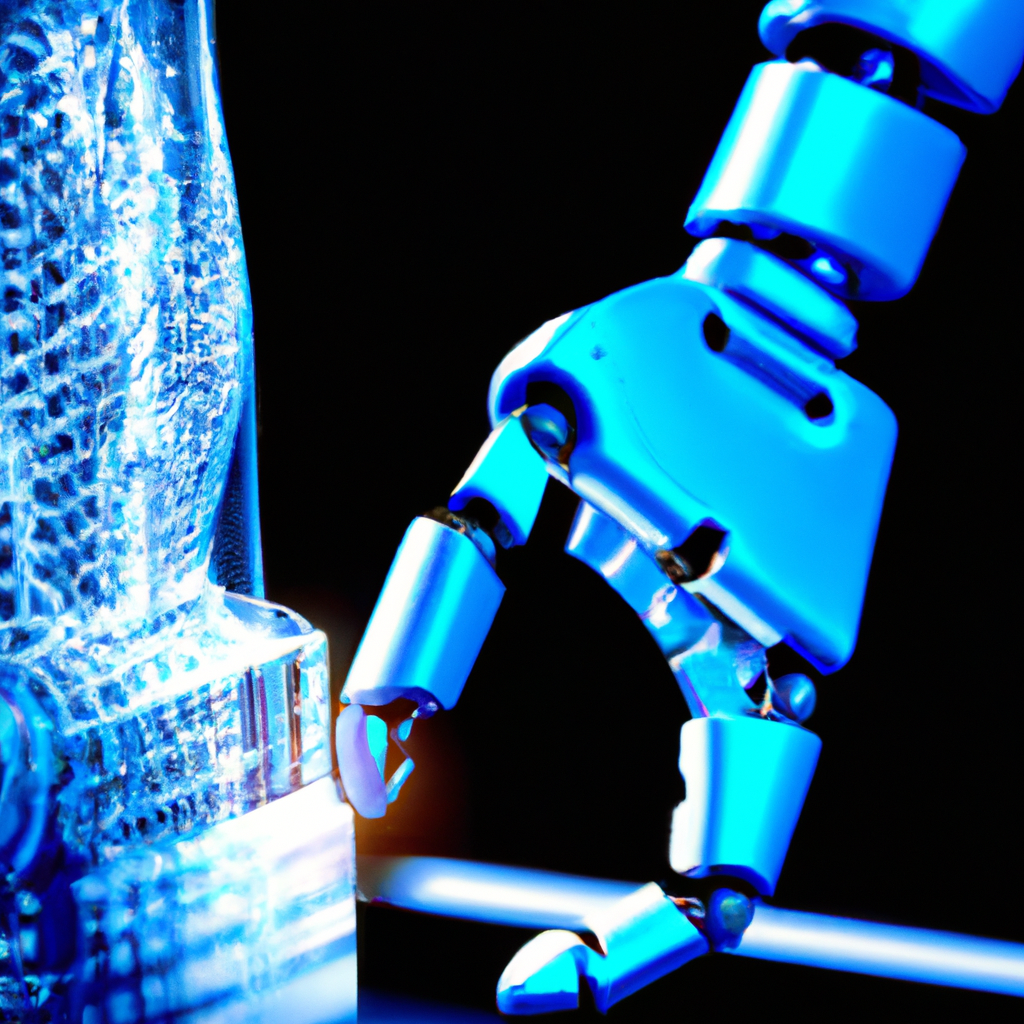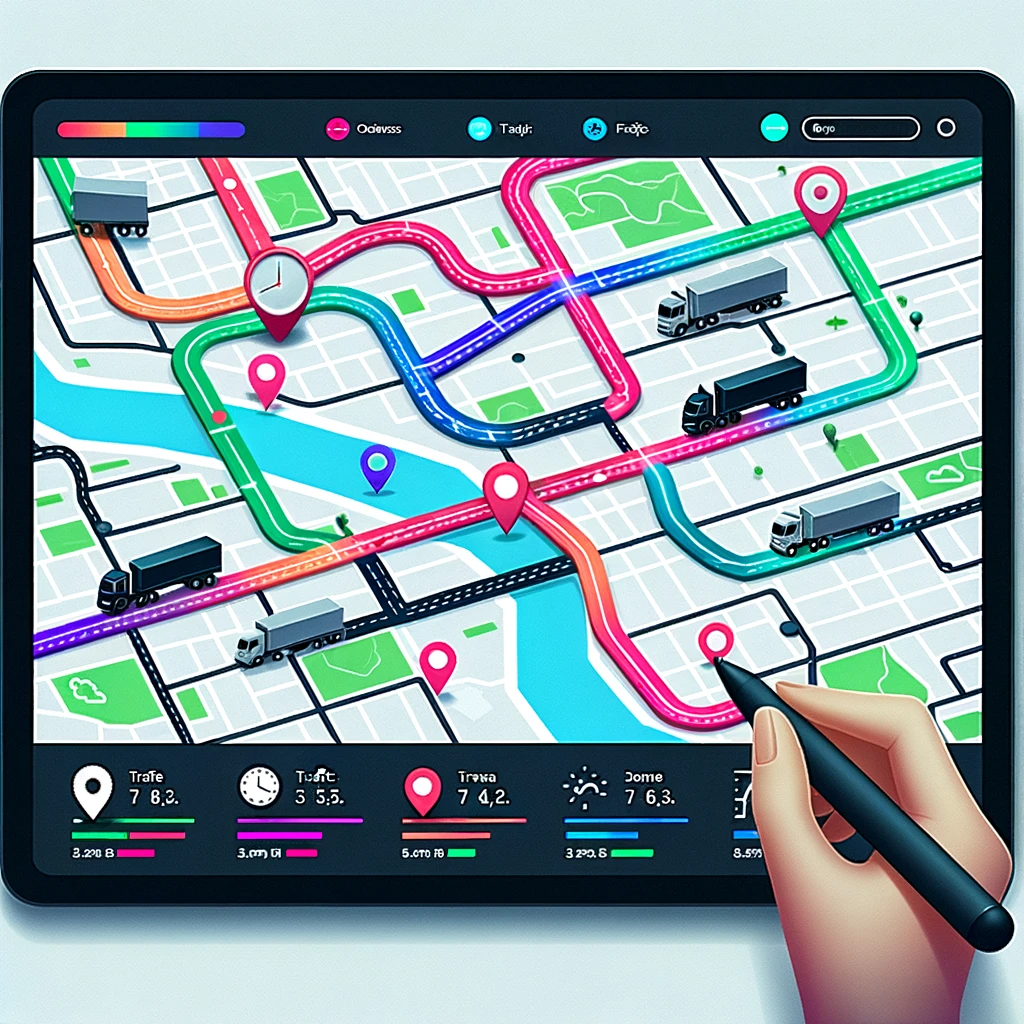In today’s rapidly advancing digital landscape, the integration of Artificial Intelligence (AI) has become a promising avenue for growth and efficiency. However, traditional industries face unique challenges when it comes to embracing this transformative technology. From skepticism about its capabilities to concerns over job displacement, barriers to AI adoption persist. This article will explore the current obstacles faced by traditional industries in their journey towards embracing AI, shedding light on the realities and opportunities that lie ahead.
Understanding AI and Its Potential
Artificial Intelligence (AI) refers to the simulation of human intelligence in machines that are designed to think and learn like humans. It encompasses a wide range of technologies and applications, including Machine Learning, Natural Language Processing, and Computer Vision, among others. AI has the potential to revolutionize traditional industries by automating tasks, improving efficiency, and enabling faster and more accurate decision-making.
Defining AI
AI is a broad field that covers various technologies and applications. It involves the development of intelligent systems that can perform tasks that typically require human intelligence. These tasks can range from recognizing patterns in data to understanding and responding to natural language. AI can be categorized into two types: Narrow AI, which is designed to perform a specific task, and General AI, which has the ability to understand and learn any intellectual task that a human being can do.
Range of AI applications in traditional industries
AI has the potential to transform traditional industries by streamlining processes, increasing productivity, and enhancing customer experiences. In healthcare, AI can assist in diagnosis, drug discovery, and personalized treatment plans. It can also be utilized in manufacturing to optimize production processes and improve quality control. In the finance industry, AI can automate data analysis, fraud detection, and risk assessment. Additionally, AI is being integrated into the transportation sector to enable autonomous vehicles and optimize route planning.
Expected benefits of AI integration
The integration of AI in traditional industries promises numerous benefits. First and foremost, AI can significantly reduce costs by automating repetitive tasks and optimizing processes. This allows organizations to allocate resources more efficiently and focus on value-added activities. Additionally, AI can improve decision-making by analyzing vast amounts of data and generating insights that humans may not be able to identify. AI can also enhance customer experiences by providing personalized recommendations and 24/7 support. Ultimately, AI has the potential to increase productivity, accelerate innovation, and drive overall industry growth.
Lack of Understanding and Awareness
Despite the potential benefits of AI, there are several barriers that hinder its adoption in traditional industries. One of the key barriers is the lack of understanding and awareness about AI. Many individuals and organizations have misconceptions about AI, perceiving it as a futuristic concept or a threat to jobs. This lack of understanding and awareness hinders the exploration and implementation of AI solutions.

General misconceptions about AI
There are common misconceptions about AI that contribute to its lack of adoption. One misconception is the fear that AI will replace human jobs. While AI can automate certain tasks, it is more likely to augment human capabilities and enable employees to focus on more complex and value-adding work. Another misconception is that AI is only applicable to large organizations with extensive resources. In reality, AI solutions can be tailored to suit the needs of companies of all sizes and industries.
Absence of AI knowledge within the organization
Another barrier to AI adoption is the absence of AI knowledge within organizations. Many companies lack the internal expertise required to understand, develop, and implement AI solutions. This lack of knowledge prevents organizations from recognizing the potential applications and benefits of AI in their specific industry. It is crucial for companies to invest in training and education to build AI capabilities internally or seek partnerships with AI-focused organizations.
Unawareness of AI’s potential benefits and uses
In addition to the lack of understanding, many organizations are unaware of the potential benefits and uses of AI in their industry. This leads to a mindset that AI is irrelevant or unnecessary for their business. Organizations need to actively engage in exploring AI solutions and staying updated with the latest advancements in AI technology. Through continuous learning and awareness, companies can identify opportunities where AI can drive innovation and improve their operations.
Skill Shortage and Lack of AI Talent
The shortage of AI experts and professionals is a significant barrier to AI adoption in traditional industries. The demand for AI talent exceeds the current supply, making it challenging for organizations to recruit qualified professionals. This shortage is due to the relatively new and rapidly evolving nature of AI, which has not allowed enough time for a sufficient number of experts to emerge.
Current shortage of AI experts and professionals
The shortage of AI experts and professionals is a global issue. The demand for AI skills in fields such as data science, machine learning, and programming far exceeds the available supply. This talent shortage prevents organizations from effectively implementing AI solutions and leveraging AI technologies to their full potential.

Challenges in reskilling existing workforce
Reskilling the existing workforce to meet the demands of AI implementation is another challenge that organizations face. Developing AI skills requires specialized training and education, which may not be readily available or feasible for all employees. Companies need to invest in reskilling programs and create a learning culture that encourages employees to develop AI skills to bridge the talent gap.
Difficulty in recruiting and retaining AI talent
Even when organizations manage to attract AI talent, retaining them is another challenge. AI professionals are highly sought after and often receive lucrative offers from various industries. Moreover, the rapidly evolving nature of AI requires continuous learning and upskilling, making it essential for organizations to provide adequate opportunities for professional growth and development to retain AI talent.
Integration and Compatibility Issues
Integrating AI into existing IT infrastructure is a complex process that poses several challenges. Traditional industries often have legacy systems and processes that may not be compatible or easily integrated with AI technologies. This compatibility issue can hinder the seamless adoption of AI and result in additional costs and implementation delays.
Problems with integrating AI in existing IT infrastructure
Integrating AI into existing IT infrastructure may require significant modifications or even replacement of certain systems. This can be time-consuming and costly, especially for organizations with complex and extensive IT architectures. As a result, companies may hesitate to adopt AI solutions due to the potential disruptions and risks associated with system integration.
Compatibility issues with current systems and processes
Compatibility issues between AI technologies and current systems and processes can also hinder AI adoption. AI systems may require specific data formats, protocols, or infrastructure that are not supported by existing systems. This incompatibility can result in data integration challenges and limit the effectiveness of AI solutions. Organizations need to carefully evaluate their existing systems and assess the compatibility of AI technologies before implementation.

The need for business process reengineering to implement AI effectively
Implementing AI effectively often requires organizations to reengineer their existing business processes. AI solutions may automate or change the way certain tasks or workflows are performed. This necessitates a thorough understanding of existing processes and the identification of areas where AI can be integrated. Business process reengineering can be a time-consuming and disruptive process, but it is essential for organizations to fully leverage the benefits of AI.
Concerns Over Data Privacy
Data privacy is a significant concern when it comes to AI adoption in traditional industries. AI systems often require access to large amounts of data to learn and make accurate predictions. However, the use of personal or sensitive data raises privacy concerns among individuals and may result in resistance to AI adoption.
Issues surrounding AI and data protection
AI systems that rely on personal or sensitive data may raise concerns about data protection. Organizations need to ensure that they have robust data protection measures in place to prevent data breaches or unauthorized access. This includes implementing strong encryption, access controls, and regular security audits to safeguard sensitive information.
Fear of data breaches and unauthorized access
The fear of data breaches and unauthorized access is a significant barrier to AI adoption. Individuals may be reluctant to share their personal or sensitive information with AI systems due to concerns about privacy and security. Organizations need to address these concerns by clearly communicating their data protection policies and ensuring transparency in how data is collected, used, and stored.
Strict privacy regulations hampering AI adoption
Strict privacy regulations in some industries or countries may also hinder AI adoption. Compliance with privacy laws and regulations can be challenging, especially when AI systems process and analyze personal or sensitive data. Organizations need to navigate the regulatory landscape and ensure that their AI solutions comply with relevant privacy regulations to build trust and confidence among users.

High Implementation Costs
The high implementation costs associated with AI integration pose a significant barrier to adoption in traditional industries. AI technologies and platforms often require substantial financial investment, which may not be feasible for all organizations, especially small and medium-sized enterprises (SMEs).
Financial barriers to AI integration
Acquiring and implementing AI technologies and platforms can be costly. The initial investment in hardware, software, and infrastructure may exceed the budget of certain organizations. Additionally, ongoing maintenance and upgrades can incur additional expenses. Organizations need to carefully assess their financial capabilities and consider the long-term returns on investment before committing to AI integration.
High costs of AI technologies and platforms
The high costs of AI technologies and platforms also contribute to the financial barrier. The development and deployment of advanced AI solutions often require specialized hardware, software, and infrastructure, which can be expensive. Additionally, licensing fees and subscription costs for AI platforms can add up, especially for organizations that require enterprise-level solutions. Organizations need to weigh the costs against the benefits and consider alternative options, such as outsourcing AI services or utilizing cloud-based solutions.
Additional costs for training and development
Implementing AI effectively often requires additional investment in training and development. Employees need to be trained to understand and operate AI technologies, and the organization may need to hire external consultants or experts to assist with implementation. These additional costs can further strain the budget of organizations, particularly those with limited resources. Careful planning and budget allocation are necessary to manage these costs and ensure a successful AI integration.
Unclear Return on Investment
The unclear return on investment (ROI) associated with AI adoption is a common barrier that organizations face. Calculating and quantifying the benefits of AI implementation can be challenging, especially in the early stages. This uncertainty makes it difficult for organizations to justify the investment and allocate resources accordingly.

Difficulty in quantifying AI’s benefits
Quantifying the benefits of AI implementation can be complex. AI solutions often lead to intangible benefits, such as improved decision-making or enhanced customer experiences, which are challenging to measure in monetary terms. Traditional ROI calculations may not capture the full value of AI implementation, leading to ambiguity and hesitation among organizations. It is crucial for organizations to develop appropriate metrics and evaluation frameworks to assess the effectiveness and value of their AI initiatives.
Long gestation period for ROI
AI implementation often requires a significant amount of time and resources before tangible returns can be realized. Developing AI models, collecting and processing data, and training the AI system can be a time-consuming process. This extended gestation period for ROI can be discouraging for organizations looking for immediate results. Organizations need to have a long-term perspective and patience when implementing AI, as the benefits may take time to materialize but can be substantial in the long run.
Challenges in measuring AI effectiveness
Measuring the effectiveness of AI solutions can be challenging due to various factors. AI systems may interact with multiple variables and factors that can influence their performance. Additionally, the evolving nature of AI technology makes it difficult to compare performance across different systems or time periods. Organizations need to develop robust evaluation frameworks and methodologies to measure AI effectiveness and demonstrate its value to stakeholders.
Cultural Resistance to Change
Culture plays a pivotal role in the successful adoption of AI in traditional industries. Resistance to change and fear of the unknown are common barriers that organizations face when introducing new technologies, including AI.
Employee fear and suspicion of AI
Employees may fear that AI will replace their jobs or devalue their skills and expertise. This fear can result in resistance to AI adoption and reluctance to embrace new technologies. Organizations need to actively communicate the benefits of AI to employees and involve them in the AI implementation process. By providing training and reassurance, organizations can address employees’ concerns and foster a culture of collaboration and innovation.
Resistance to change in traditional industries
Traditional industries often have established practices and processes that have been ingrained over time. Introducing AI technologies can disrupt these established norms and practices, leading to resistance to change. Organizations need to invest in change management strategies and engage stakeholders at all levels to overcome resistance and create a culture that embraces innovation and continuous improvement.
Management’s reluctance in adopting new technologies
Management’s reluctance to adopt new technologies can also impede AI adoption in traditional industries. Resistance from senior management or decision-makers can stem from concerns about the viability, cost, or impact of AI implementation. Organizations need to foster a culture of innovation at the managerial level and encourage leaders to proactively explore and invest in AI opportunities. Demonstrating successful AI case studies and showcasing the potential benefits can help alleviate management’s reservations and drive AI adoption.
Regulatory and Compliance Issues
Existing regulatory frameworks may not be conducive to AI adoption in traditional industries. AI systems may operate in environments with specific regulations and compliance requirements, making it challenging for organizations to integrate AI solutions.
Existing regulatory framework not conducive for AI
The regulatory frameworks in many industries were developed with conventional technologies in mind and may not address the unique challenges posed by AI. Compliance with these regulations can be difficult, as AI systems may operate in complex or uncertain environments and interact with sensitive data. Organizations need to work closely with regulators and policymakers to develop AI-specific regulations that strike a balance between innovation and protection.
Risk of non-compliance when using AI
The use of AI systems may pose compliance risks if not properly regulated and monitored. AI algorithms may generate biased or discriminatory outcomes, which can result in legal and ethical consequences. Organizations need to develop robust governance frameworks and implement measures to monitor and mitigate the risks associated with AI algorithms to ensure compliance with relevant laws and regulations.
Lack of clear AI-specific laws and regulations
The lack of clear and comprehensive AI-specific laws and regulations further complicates AI adoption in traditional industries. Organizations may face uncertainty and confusion when trying to navigate through various legal and regulatory requirements. Policymakers need to collaborate with industry experts to develop clear guidelines and regulations that foster innovation while safeguarding the interests of individuals and society as a whole.
Conclusion and Future Prospects
Despite the current barriers to AI adoption in traditional industries, there are steps being taken to mitigate these challenges. Organizations are increasingly investing in AI education and training programs to build internal capabilities and bridge the AI talent gap. Governments and regulatory bodies are also working on developing AI-specific regulations that address privacy concerns and ensure ethical AI implementation.
The future of AI in traditional industries is promising. As awareness and understanding of AI grow, more organizations are recognizing the potential benefits and exploring AI solutions. With advancements in AI technology and increasing availability of AI tools and platforms, the barriers to AI adoption are gradually being overcome.
Overcoming these barriers is crucial for successful AI adoption in traditional industries. It requires a combination of efforts from organizations, governments, and individuals to build a culture that embraces innovation, invests in AI talent, and creates an enabling regulatory environment. By overcoming these barriers, traditional industries can harness the power of AI and unlock its full potential to drive growth, efficiency, and transformation.










